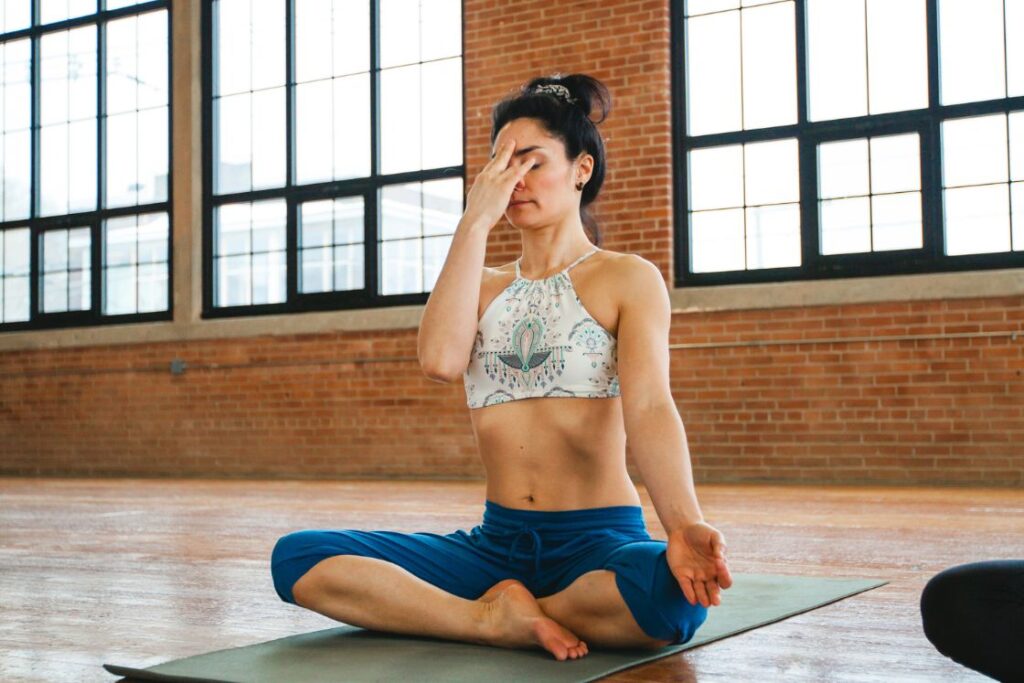
The physical practice of pranayama helps bring the mind into a state of calmness, clarity, and stability. It bridges the connection between mental and physical practices.
Before starting pranayama, it’s important to pay attention to your seated posture, timing, environment, and physical condition. Additionally, consider other aspects such as your hand positions (mudras) and breathing patterns.
When used with the hands, mudras act as a harmonising force for the body. They can be a powerful aid in pranayama practice by enhancing the flow and regulation of breath. Each mudra promotes specific qualities and effects.
Just as we have two hands, the body also has two energetic sides the solar (right) and lunar (left) channels. Certain mudras can be used to stimulate either the sun or moon energy individually, supporting balance within the body.
Mudras are typically used during pranayama while seated in Padmasana, Sukhasana, or Vajrasana, helping to activate various aspects of the body and mind.
In this article, we’ve listed six commonly used mudras that can easily be incorporated into any pranayama practice.
1. Gyan Mudra
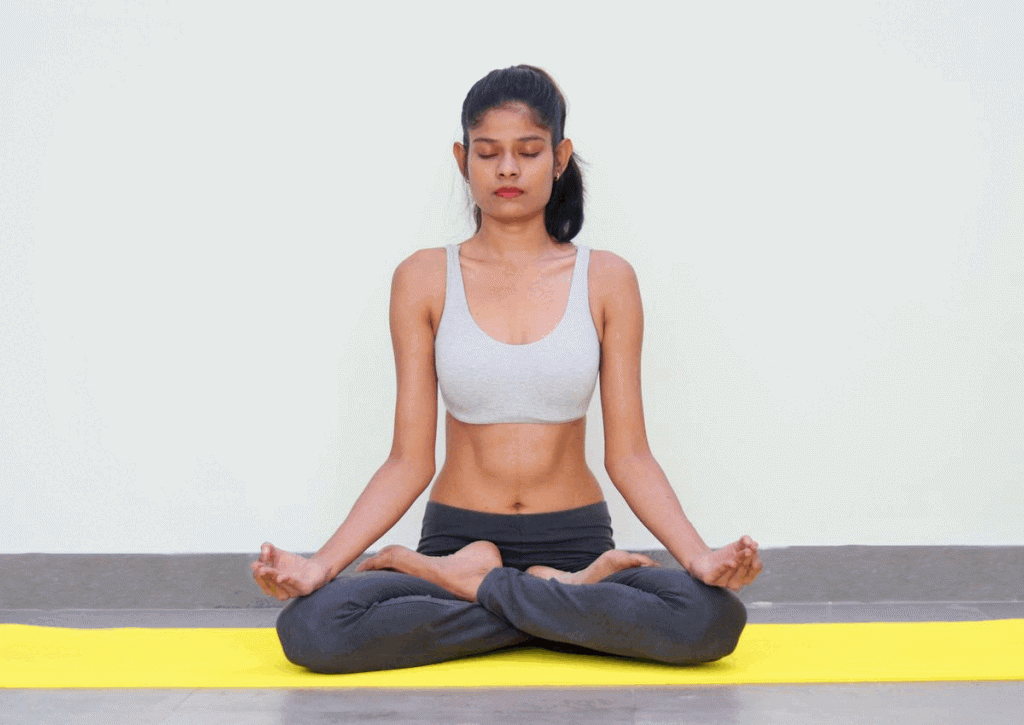
Gyan Mudra can be used along with pranayama techniques like ujjayi and kapalabhati. This mudra supports the practitioner’s focus and helps cultivate true knowledge and inner awareness. It also strengthens the vayu (air) element in the body, which is linked to enhanced function of the pituitary gland, nervous system, and memory.
Steps to perform Gyan mudra with Ujjayi pranayama:
- Sit comfortably in a meditative position with your spine erect.
- Place your hands on your knees with palms facing upward.
- Take a few deep breaths in and out through your nose.
- When you’re ready, bring the tip of your index finger to the tip of your thumb. Keep your other three fingers extended and relaxed. It’s Gyan mudra.
- Begin the Ujjayi breath, inhaling deeply through your nose while slightly constricting the back of your throat, then exhaling slowly and audibly through your nose.
- Maintain the Gyan Mudra throughout your practice, focusing on your breath and the connection between your finger and thumb.
- When you’re finished with your practice, release the mudra and take a few deep breaths before opening your eyes.
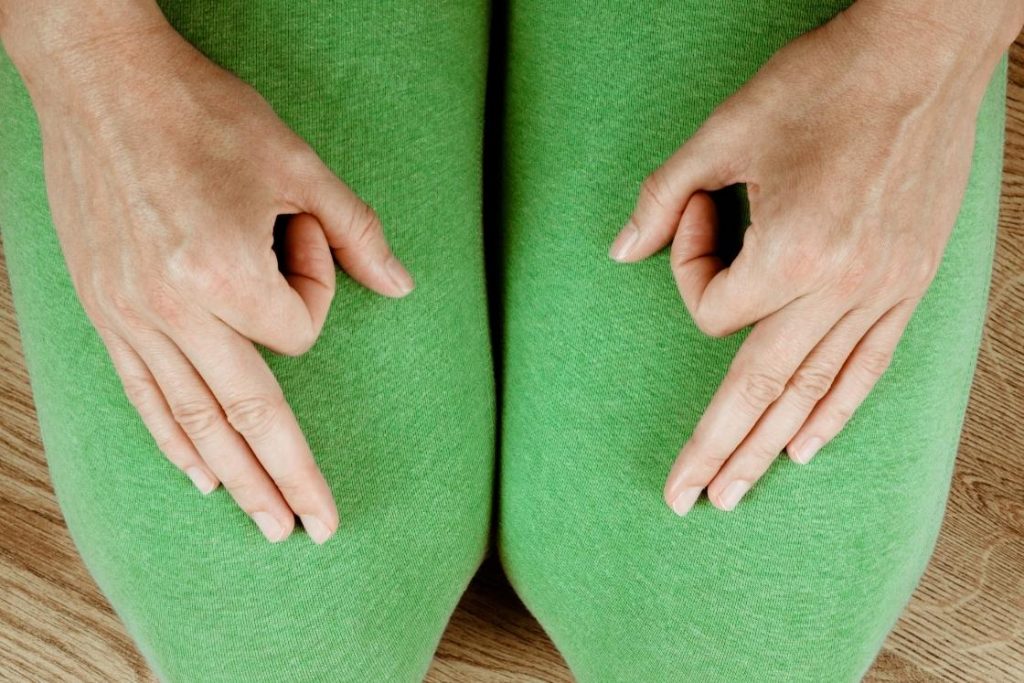
Similar to Gyan mudra, chin mudra (basically, Gyan mudra hands with palms facing down) can be used in adham pranayama (abdominal breathing) to get control of the lower parts of the lungs. Hold chin mudra hands sitting in Vajrasana for pranayama practice.
2. Prana Mudra
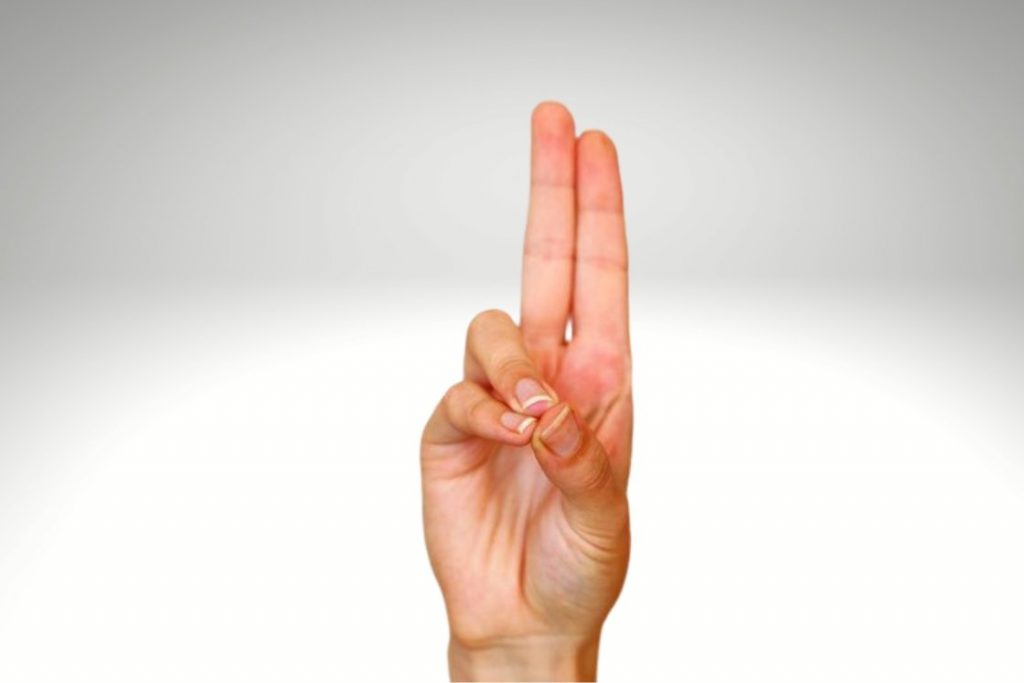
Prana Mudra can be used during energising pranayama practices like Kapalabhati, Bhastrika, and Anulom Vilom (with the left hand in Prana Mudra and the right hand in Vishnu Mudra). However, it is often practised on its own, without being paired with any specific pranayama technique.
Holding this mudra during pranayama helps balance the body’s vital life force Prana. It supports breath regulation and calms the mind. Practising this mudra also improves vision, increases energy levels, and reduces fatigue and anxiety. On a mental and emotional level, it enhances resilience, assertiveness, and self-confidence.
Here are the steps for a simple breathwork practice with Prana mudra:
- Find a comfortable seated position, either on the floor or in a chair, with your spine tall and straight.
- Place your hands on your knees with your palms facing up.
- Bring your thumb in contact with your ring and little fingertips, gently touching to form Prana mudra.
- Close your eyes and begin to deepen your breath, inhaling and exhaling through your nose.
- As you inhale, visualize drawing in fresh prana or life force energy through your breath and into your body.
- As you exhale, visualize releasing any stagnant or negative energy from your body and mind.
- Continue this breathwork practice for several minutes, focusing on the flow of prana through your body and the grounding energy of the earth beneath you.
- When you are ready to finish, release the mudra and take a few deep breaths before slowly opening your eyes.
3. Vishnu Mudra
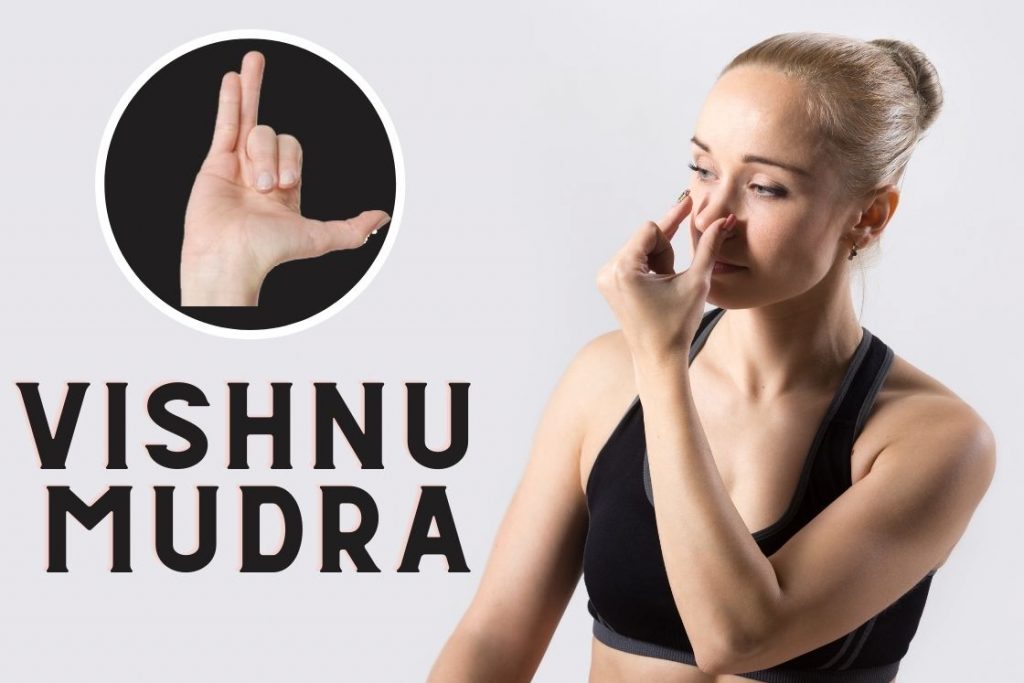
Vishnu mudra is a popular pranayama mudra used when performing Nadi Shodana pranayama (Alternating Nostril Breathing). This is one-hand mudra in which the right hand is frequently used to regulate breath through alternate nostrils, whilst the left hand is simply kept in palms up or down position.
In this mudra, the practitioner opens and closes nostrils in succession. It teaches a practitioner to breathe through one nostril at a time.
The Vishnu mudra, which offers steadiness, strength, and tranquillity, is said to amplify the advantages of Nadi Shodhana. It further reduces anxiety, soothes the nerves, and harmonizes the left and right hemispheres of the brain.
Here are the steps to perform Vishnu Mudra pranayama:
- Sit in a comfortable position with your spine straight and shoulders relaxed.
- Place your left hand on your left knee in Gyan Mudra (touch the tip of the thumb and index finger together, keeping the other fingers straight).
- Bring your right hand up to your nose and fold your index and middle fingers toward your palm, leaving your thumb, ring finger, and pinky finger extended. It’s Vishnu Mudra.
- Use your right thumb to close your right nostril and inhale deeply through your left nostril.
- At the end of the inhale, close your left nostril with your right ring finger and release your right nostril.
- Exhale slowly and fully through your right nostril.
- Inhale deeply through your right nostril.
- At the end of the inhale, close your right nostril with your right thumb and release your left nostril.
- Exhale slowly and fully through your left nostril.
- This completes one round. Continue for 5-10 rounds, alternating nostrils for each inhale/exhale cycle.
Remember to keep your breath smooth, steady, and relaxed throughout the practice.
4. Adi Mudra
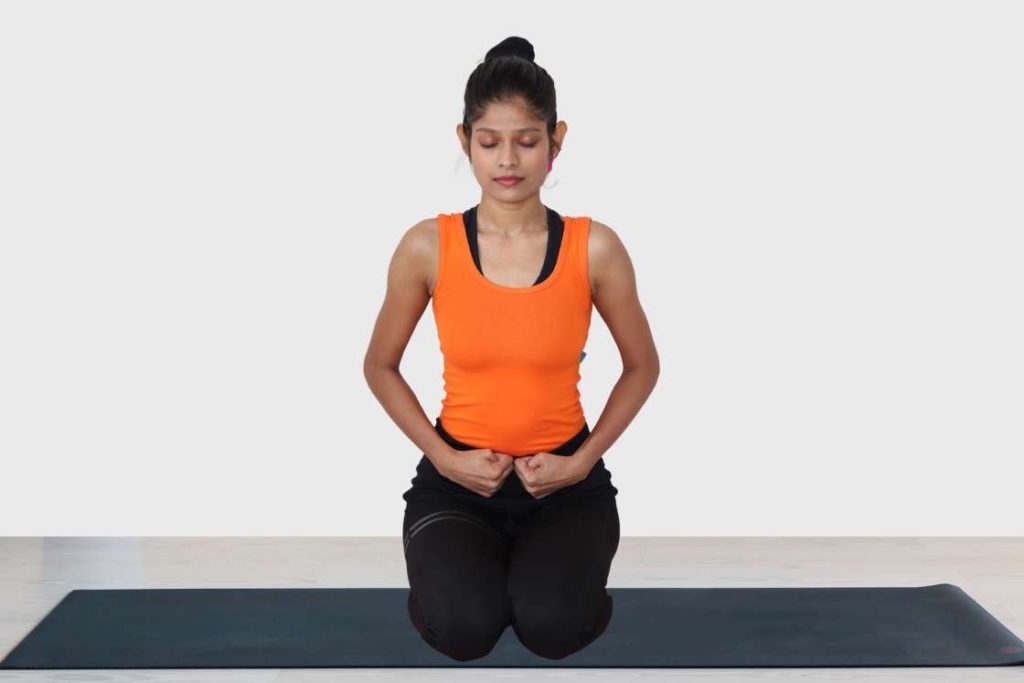
Adi mudra is considered the “Primal Mudra” as it is the first hand gesture that a baby naturally forms at birth. This mudra is formed by curling the fingers into a fist and placing the thumb over the base of the little finger.
This mudra helps the body become more conscious of breathing, and when the breath is more conscious, prana energy flows more easily throughout the body. It can held in Sama vritti pranayama.
You can hold the adi mudra in shavasana at the end of asana practice to calm the nervous system.
Here are steps to perform adi mudra with sama vritti pranayama:
- Find a comfortable seated position and place the hands on the knees with the palms facing down.
- Bring the thumbs to touch the base of the pinky finger and encircle the thumb with all four fingers, creating a light fist. It’s Adi Mudra.
- Close your eyes and take a few deep breaths to centre yourself.
- Begin the Sama Vritti Pranayama by inhaling for a count of four.
- Hold your breath for a count of four.
- Exhale for a count of four.
- Hold your breath out for a count of four.
- Repeat steps 4-7 for several rounds, keeping the same count for inhales, exhales and holds.
- Focus your awareness on the flow of breath and the sensations of the mudra.
- When finished, release the mudra and take a few deep breaths before opening your eyes.
5. Brahma Mudra
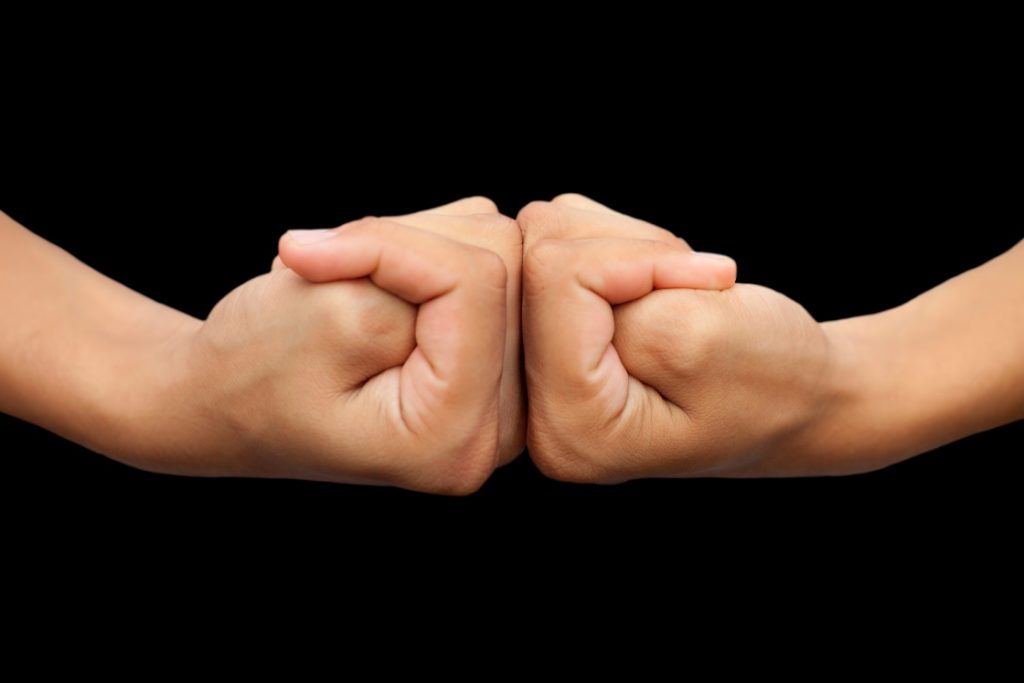
When practising pranayama, Brahma mudra aids in promoting a deep breath. It’s performed by wrapping the fingers around the thumb and then knuckles of both hands pressed together.
Poorna mudra is another name for Brahma mudra. It is so-called because it aids in exhaling all the air from the abdomen. By squeezing both hands’ fists against the navel while performing the Brahma mudra, excess abdominal gases are easily released.
Steps to perform
- Sit in any comfortable meditative position, preferably Vajrasana (Thunderbolt Pose). Keep your hands on the lap.
- Form a tight fist with the thumb tucked inside the fingers.
- While fist facing upwards make sure the knuckles of your right hand are touching and adjacent to the knuckle of your left hand.
- Now on maintaining hands & fist arrangement, bring both fists near your navel.
- As you exhale, press the fists against your abdomen on exhalation. On inhalation, relax the abdomen and let it freely expand out.
6. Chinmaya Mudra
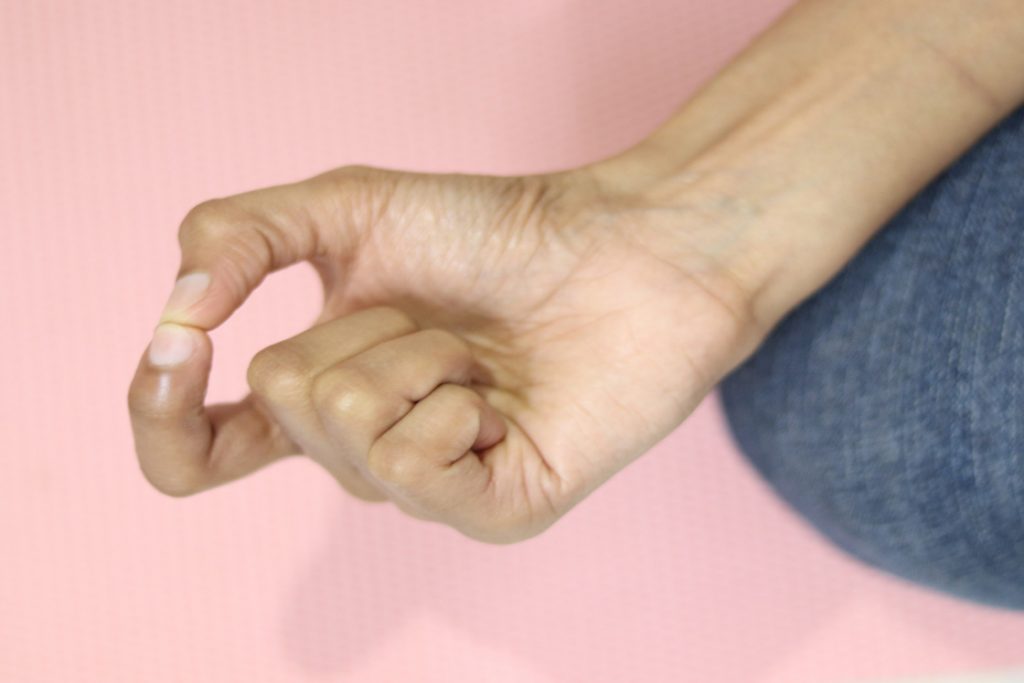
Chinmaya mudra, also known as the gesture of awareness, helps you cultivate awareness around the body’s thoracic region. It surges the prana to flow in this region when combined with simple breathwork practice.
Steps to perform
- Sit in any comfortable meditative position, preferably Vajrasana (Thunderbolt Pose). Keep your hands on the lap.
- Bring your hands on your thighs or knees with palms facing up.
- On both hands, curl your middle, ring, and little fingers toward the palm. The index and thumb will be joined at the tips.
- Keep hands in this mudra for the entirety of the pranayama practice.
Conclusion
Using mudras in pranayama practice can help you focus your mind, channel your energy, and balance your body. Gyan mudra can promote clarity and wisdom, prana mudra can increase vitality and energy, chin mudra can enhance concentration and awareness, chinmaya mudra can open the throat, brahma mudra can calm the mind and balance the nervous system, and adi mudra can stimulate the root chakra and increase grounding.




